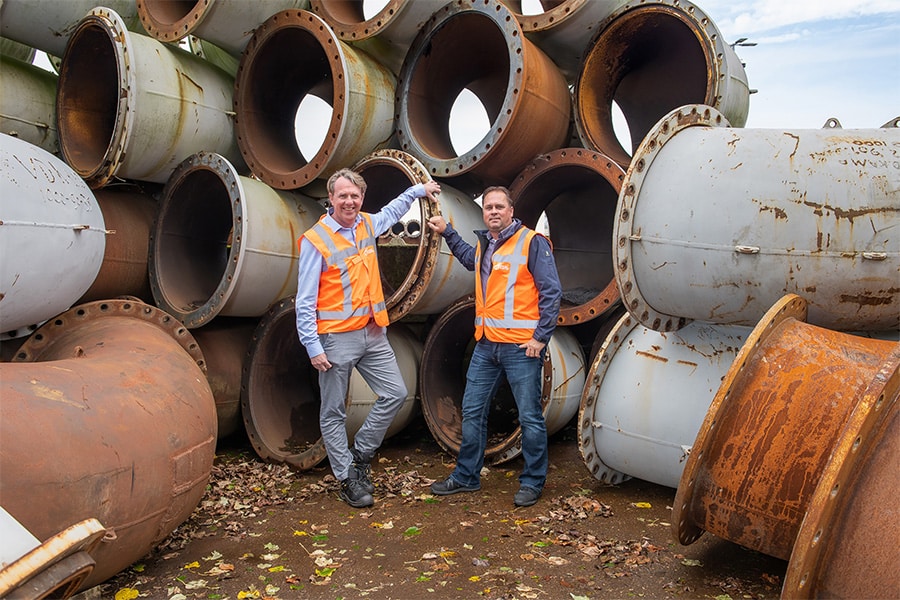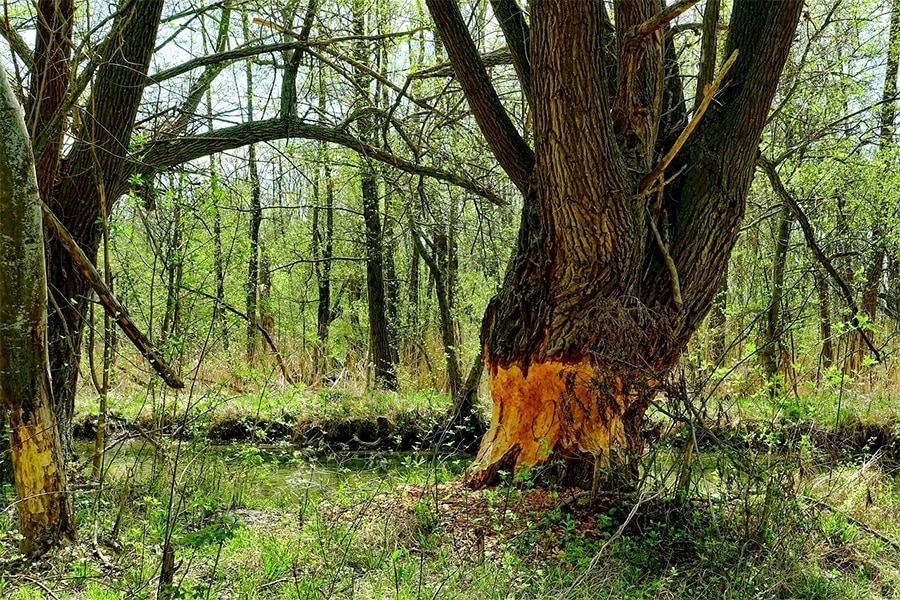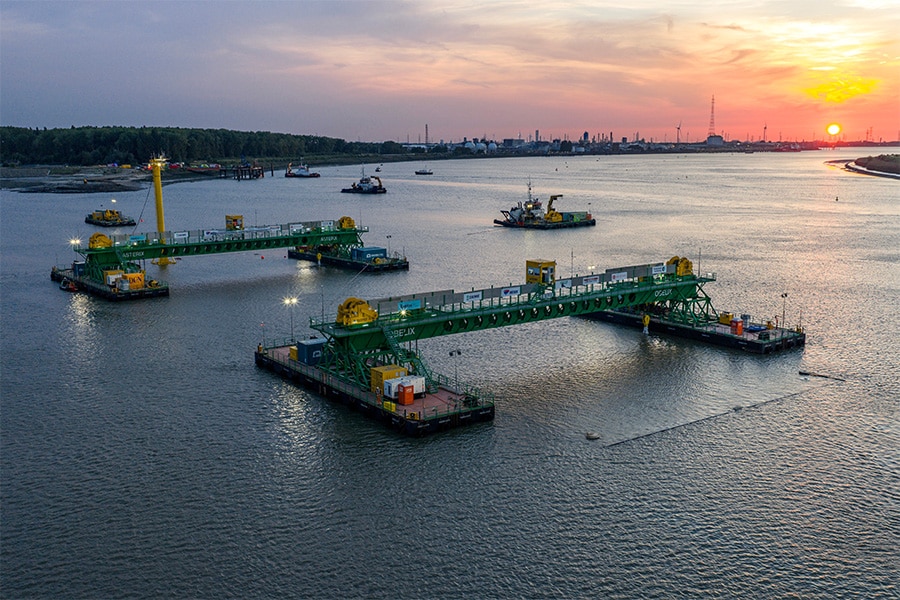
Prominent role for Geo-data specialist in sustainable dike reinforcement
The dike along the Netherlands' busiest river Waal is being reinforced over a distance of 19 kilometers by construction consortium Mekante Diek between Tiel and Waardenburg. Fugro has a prominent role in this multi-year project. The Geo-data specialist was already involved in the design and soil investigation and is now also providing the monitoring and quality inspections of the dike material during construction. Fugro is also making an important contribution to the project team around the digitization of the geo-data, a role that is becoming increasingly important in large dike reinforcement projects of this kind.
Ever since the tender, Fugro has been actively involved in the dike reinforcement of the Waal dike between Tiel and Waardenburg. "We supported Mekante Diek in creating the tender design," begins Ben Rijneveld, Manager Sector Water at Fugro. "In this, optimizing the sheet pile design and sustainability were two important EMVI (Economically Most Advantageous Tender) criteria. Taking a critical look at the sheet pile design saved a lot of steel. Because the more you zoom in, for example by looking at more sections in detail, the more accurate you can work and the smarter you can choose the starting points. Nevertheless, the design obviously meets the water safety requirements. Less steel means fewer emissions, so a more favorable MKI (Environmental Cost Indicator) value. On all EMVI criteria Mekante Diek scored a 10, and the optimized sheet pile design contributed to that."

Olympic task
After being awarded the construction consortium had to get to work quickly. "Drawing up the Final Design (DO) within six months was an almost Olympic task," Ben outlines the course of the project. "In addition, the necessary soil investigations had to be carried out at locations in the 8-kilometer-long dam wall route where there wasn't much information yet. Since we at Fugro can't be taken for granted, we already thought about which soil investigations should be carried out and where. That is why we were able to start carrying out the soil investigations immediately after the contract was awarded. We also kept the design team that worked on the tender ready and expanded it quickly after award. Our team worked integrally with the team from Mekante Diek. Together we were able to complete the DO in six months. That is extremely fast for a dike reinforcement of 19 kilometers."

3D subsurface model
Based on the data from all the ground surveys, Fugro modeled a 3D subsurface model and combined it with the geometric model of the dike. "The dike sometimes goes in, sometimes out, the subsoil is erratic and there is a lot of variation in elevation," Ben continued. "By combining all the variables in the 3D subsurface model, we can calculate settlements in great detail. Normally you take a dike section of a few hundred meters and assume the worst geometry and the worst probing. Because we have gathered much more data here and are modeling in much greater detail, we can design more sharply and identify 'problem locations' better. It is particularly important for efficient execution. In this way, the amount of soil movement can be estimated and determined much more accurately." Also for the sheet piling calculations, Fugro retrieves data from the 3D subsoil model to perform calculations more efficiently. Ben: "This far-reaching digitization makes this project special."

Tasterp
Ben rightly called the DO phase an almost Olympic task, given the efforts Fugro and the project team put in in a short period of time. "On top of that, in the DO, we also carried out preparatory work for the Executive Design (UO), such as installing a trial mound. This is intended to calibrate our settlement projections. To do this, we installed various instruments, such as pore pressure gauges, and the necessary probing, drilling and even lab research were carried out. It provided useful information for -again- optimizing the design," Ben knows.

Environmental Monitoring
Speaking of the link between design and field testing, Fugro also provides environmental monitoring to adjacent properties. "Data from vibration meters on site, among other things, we match with our forecasts. These insights are extremely valuable in making a trade-off for vibrating or pressing the sheet piles," says Olaf Duizendstra, Senior Project Manager at Fugro. "After all, vibration is much faster than compression, which means less disruption to the surrounding area, and it's cheaper too. But it has to be done safely. This is why we continuously check whether the work is performed within the limits. We also placed height bolts before the start of the work and took a zero measurement at the most critical points. During construction we measure any settlements and subsidence in X, Y and/or Z directions. In addition, we still have access to information from monitoring wells, to check that the influence on the groundwater level is actually negligible."

Field Laboratory
Fugro has also stationed its mobile field laboratory at dike reinforcement Tiel-Waardenburg. "Based on Mekante Diek's planning, we measure compaction on site. For example, we take cuttings and strike proctors to assess whether the embankment has been placed properly. Those variables, along with data from pore pressure gauges, determine whether the next embankment can be placed," Olaf explains. "Ultimately, Waterschap Rivierenland wants confirmation that everything has been applied properly, and that's what these control measurements are for. We also assess the quality of the supplied soil flows, including the (dike) clay, from the field laboratory." Ships are unloaded on the conveyor belt. In the meantime, the clay can get wetter or drier. Fugro checks that the clay is not too wet or too dry for proper processing and advises on measures if it is, so the contractor can get back to work quickly. "Because we are short on time with the laboratory, we can quickly and adequately guide Mekante Diek in its execution and avoid unnecessary transport movements." Fugro's field laboratory is the only one in the Netherlands accredited by the Council for Accreditation.
Dike reinforcement Tiel-Waardenburg is a clear example of Fugro's expertise in water safety and soil-related risks in the design and implementation phases. "It is not unknown territory for us," says Olaf. "We have also been involved in previous dike strengthening projects on the north side of the Waal River and have a wealth of geo-information from Gorinchem to Sprok. All that knowledge and experience comes in very handy here as well." ■
Heeft u vragen over dit artikel, project of product?
Neem dan rechtstreeks contact op met Fugro.
 Contact opnemen
Contact opnemen




